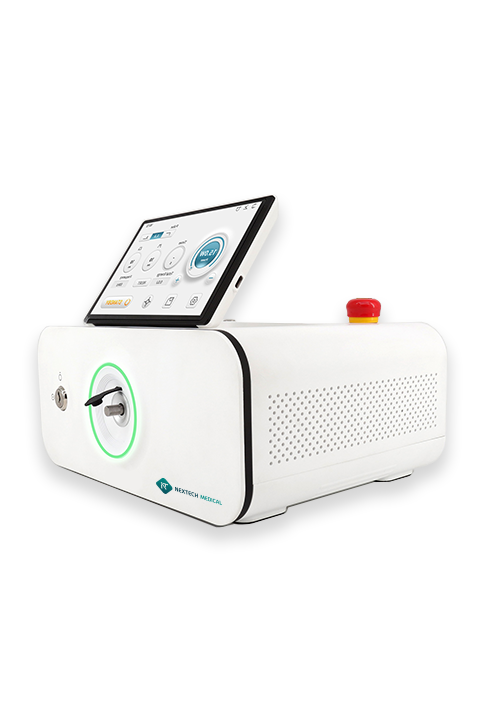Votre produit a été rajouté au panier

Compared with surgery, percutaneous laser decompression surgery is the least aggressive treatment (suitable for nucleus pulposus without prolapse of the outer layer). Pulsed laser vaporizes the protruding disc nucleus pulposus, reducing or eliminating nerve compression and stimulation. The 1470nm with larger water absorption properties appears to have an effect on the entire nucleus pulposus and not only in surrounding tissue of laser fiber (carbonization zone). During PLDD, disc volume is minimally decreased, however, disc pressure can be significantly lowered. When using laser for disc decompression, a small amount of nucleus pulposus evaporates.

• Intelligent hardware control system. • Stable and continuous power delivery thanks to the liquid cooling system • The 1470nm and 980nm can be selected individually or blended together • 1470nm 25W max in CW mode for versatile treatment. • Combination of treatment data storage and patient data storage. • Nature-touched LCD allowing easy and rapid set-up.
• The energy of the laser makes the diseased nucleus pulposus hollow, reduces the pressure in the intervertebral disc, relieves and eliminates the compression on the sciatic nerve or vertebral artery nerve, and will not cause damage to the peripheral nerve tissue • According to experimental studies, it has been determined that the temperature of the laser vaporized intervertebral disc will not have a scorching effect on the intervertebral foramen (nerve foramen) or spinal canal
• Use a spinal puncture needle to enter the diseased intervertebral disc (nucleus pulposus) through the skin, introduce a thin optical fiber through the puncture needle, and then activate the laser to vaporize part of the intervertebral disc nucleus pulposus
